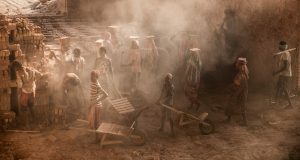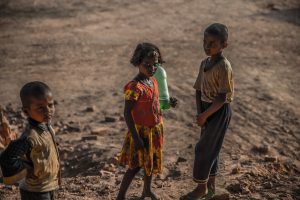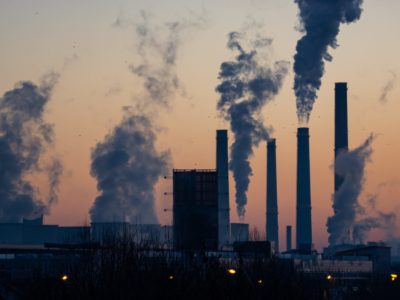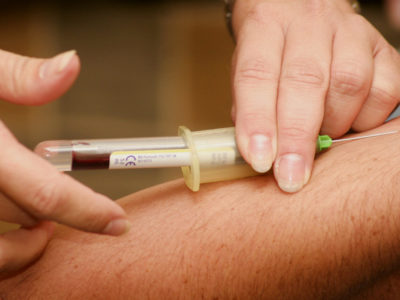Two years ago, the Nepalese earthquake struck the international community. With its the large amount of damage and displacement, first aid responses were quick and efficient. As the emergency situation has now left the limelight, underground illegal activities are proliferating, and the most vulnerable parts of society are suffering. Indeed, very little effort has been shown in addressing the issues faced by nepalese kids, who in a scarily increasing fashion, are becoming at risk of trafficking. This emergency requires an increase in immediate aid, education for children and the reconstruction of more schools.
The earthquake killed more than 8.000 people and destroyed 700.000 houses, not to mention the damages it inflicted on temples and UNESCO World Heritage Sites. With the joint efforts of the international community-supporting the region with humanitarian aid- and the nepalese people- people who never give up always carrying a smile on their faces- the emergency is now over. Despite these considerations however, other concerns still remain. These may be more hidden or just too little discussed to be completely eradicated.
Children victims of organ trafficking, sexual exploitation and dangerous works in very bad sanitary conditions
These problems are mainly faced by the weakest, i.e. orphans and children of poor household families. An increasing number of children are sold for organ trafficking, specifically kidneys. From official sources, every year more than 10.000 kids are intended for sexual exploitation in other countries, such as India. Many others are face days of undeclared work, dangerous, poorly paid, and in unacceptable hygienic/sanitary conditions.
During various journeys between one city to another, it is possible to meet many children working for a number of improvised activities.Intercity trips are long, from 8-10 hours to only cover 200 kilometers, due to the almost absolute lack of asphalt and roads filled with holes. Buses and other means of transport are always overcrowded and miraculously arrive at their destination.

Many of kids are selling fruits and vegetables, chips and cookies, beverages and sweets. At each stop they get on the bus with their baskets full of products they try to sell directly from the windows, reaching out with their little arms. There are also children who work for transport companies, screaming or running desperately down the streets at each stop to look for new customers to get on the buses. Some of the kids cook in the “refreshment stands” of those known routes. They make omelettes with eggs and onions, “momo” (steamed or fried ravioli stuffed with chicken or vegetables), and also the famous “dal-bhat” (a typical nepalese dish made up of rice, stewed lentils, chicken and mixed vegetables).
Glue: new children’s “drug” to alleviate hunger and thirst
It is sad and unsettling to see children working in agricultural fields day and night, harvesting under a burning sun with only one bottle of water to share with at least three or four others. And it can get even worse. Brick factories like the ones in the poor villages in Lumbini, kids work alongside women. They both carry full wheelbarrows or carry dozens of bricks in their heads, wearing only a pair of flip flops on their feet. The loaded weight is always almost prohibitive, sometimes even higher than them. The air they breathe in is often suffocating due to all the dust and mist. The picture of this situation calls to mind a Dante’s infernal circle and seeing the conditions, it’s not such a far and wrong comparison.

In the main cities it is easy to find orphans begging for alms, repeating the usual sentence: “chocolate, money, no family”. Sadly, it is equally easy, to find other young kids who sell drugs, offering their products in whispering voices on the roads, with those interested leading them into hidden places. There are also those who sniff glue. Yes, they sniff glue to alleviate hunger, thirst, and because it is the only “drug” where they avoid the risk of committing a crime but most of all, glue is cheap.
The “revival” of Kathmandu between colors and smog
In Kathmandu, the capital, some statues and temples have been rebuilt, many others are in reconstruction and throughout the years this city has become the queen of tourism. Shopping and “modernization”, with those beautiful mixtures of colors and fragrances. Walking through Thamel, a little district of the capital, it is possible to find everything from restaurants to suit everyone’s palate and price demands, shops of all kinds (especially trekking gear) travel agencies, hotels, hostels and tattoo studios all for bargain prices. All of this has certainly helped the “revival” but unfortunately it has become a chaotic metropolis, full of smog and dust, crowded with crazy cars and motorcycles, with people practically forced to wear masks.

Many humanitarian associations have helped Nepal in reconstruction
After the earthquake within the last 2 years, fortunately many associations from all over the world have helped this country, giving shelter to many orphans, building schools and temporary accommodations for the poorest families who have seen their homes collapsing around them. There are also people who have chosen to move permanently to Nepal or stay there for months, in order to help people in need.
In the more isolated villages and in the mountainous areas, it has been and it still nowadays is very difficult to access to humanitarian aid to rebuild -for the least- temporary schools and houses. That is because of the difficulty of reach of these areas, especially in winter and monsoon season, when these villages are practically inaccessible. In these locations people have to walk for kilometers to reach the nearest rivers and children, with their cute blue uniforms, often have to take 5 hour-walks when going and returning from school, carrying their backpacks of leftovers from the day before.
Rights and a better future for nepalese children
The most effective way to counter all this phenomena is to act by supporting the poorest families, offering protection to orphans and increasing access to education by raising their awareness. If children learn to recognize their rights, they are often able to enforce them. Schools need to be rebuilt and kids need help to have a better future, in many cases simply to have a future.

Visiting Nepal is already helping the country’s rebirth, donating money to associations for food, school supplies and toys is already a good start. These children, beautiful nepalese children, still need a lot of help!
Namaste.
Pictures: Nicolas Brunetti







1 comment for “Nepal two years later: cities rebuilt, kids still in need of help”